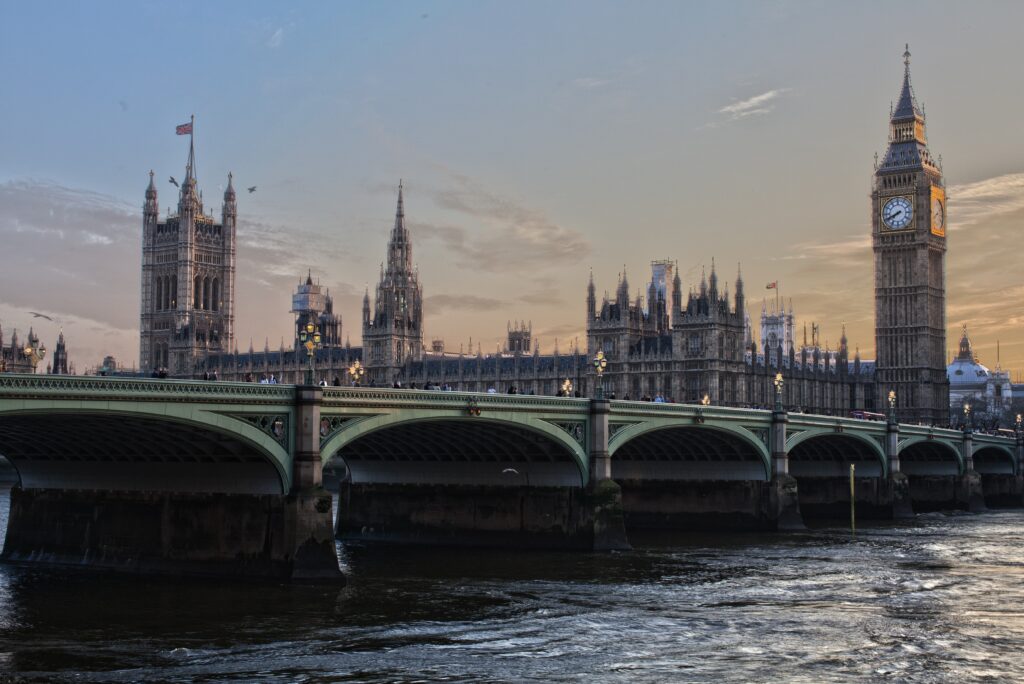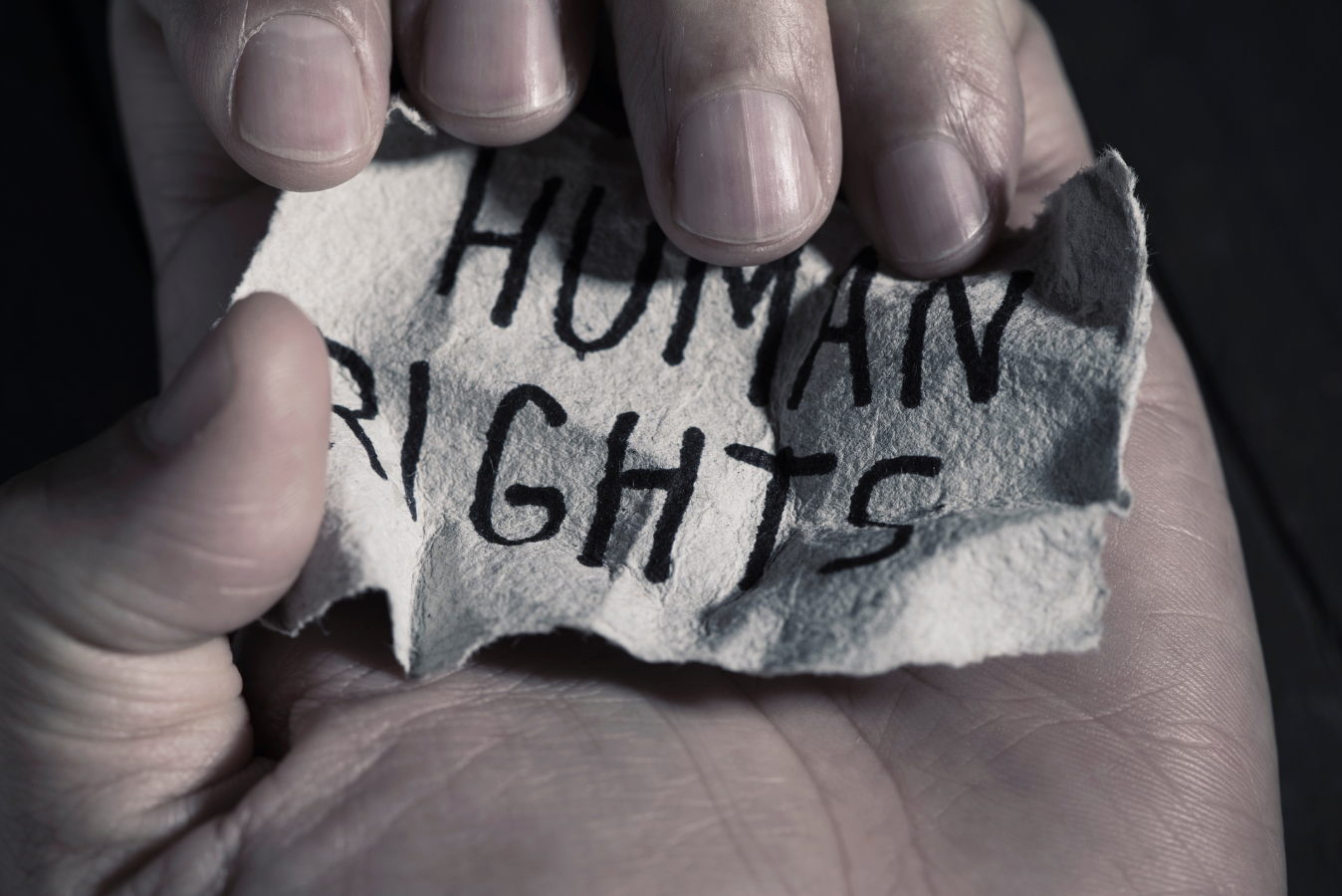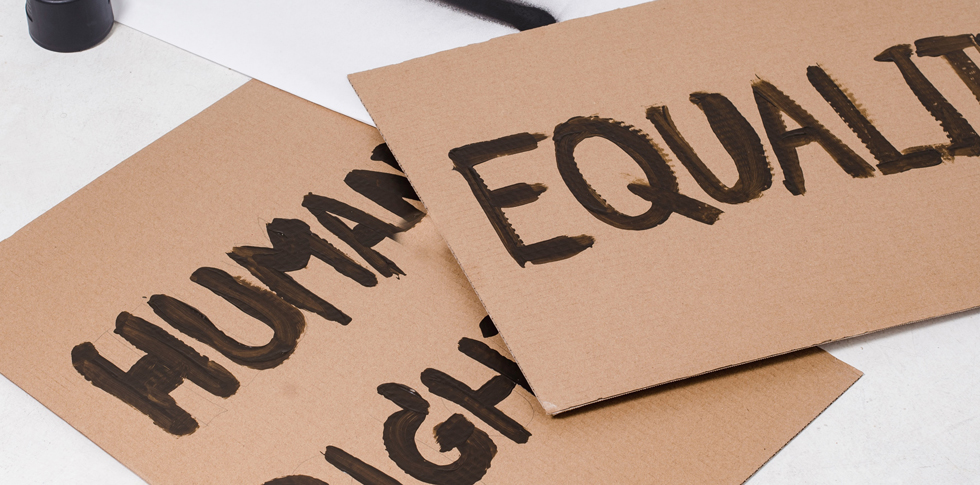Short(ish) Read Explainer: The Rights Removal Bill
2022 has been a busy year for the Government attempting to reduce the rights of the public, avoid accountability, and increase its own powers. In the last six months, the Policing Bill, the Elections Bill, the Nationality and Borders Bill, and the Judicial Review and Courts Bill have all become law. Each of them damages our democracy and removes the rights of the public.
June 2022 saw celebrations as the first Rwanda deportation flight was cancelled. However, within hours, an intervention by the European Court of Human Rights (ECtHR) was being used to bolster Conservative attacks on the UK’s human rights framework.
Six days later, the Government tabled its ‘Bill of Rights’ (or the Rights Removal Bill, as it has become known), which will repeal and replace the Human Rights Act 1998 (HRA). The Rights Removal Bill is the next piece of dangerous legislation that will remove our rights and increase the Government’s power to ignore and abuse human rights without accountability.
Meanwhile, deportation, the role of the ECtHR, and the European Convention on Human Rights (ECHR) has become a lynchpin for Conservative attacks on the UK’s human rights framework and a central feature of the Conservative leadership contest, with both Liz Truss and Rishi Sunak reportedly stating that they would be prepared to leave the ECHR for the Rwanda policy to succeed.
In this context, it is possible for the Rights Removal Bill to be positioned as the ‘moderate’ middle ground within political debates on human rights as it stops short of removing the UK from the ECHR. However, to understand it as a moderate position is to ignore its devastating impact on our human rights framework and the ability of victims of human rights breaches to access justice.
The bill will likely be hotly contested when Parliament returns in the autumn. For that reason, it is essential that policymakers, academics, and community activists mobilise to fight this bill.
This short explainer briefly explores:
- Where the Rights Removal Bill has come from,
- What it will do,
- Its consequences,
- What we should do instead,
- How you can get involved.
This explainer provides only an essential overview. For an in-depth understanding of the bill, read our Long Read Explainer here.
Ultimately, due to its fundamental flaws and the vast number of problematic clauses contained within the bill, no amount of amendments can temper its damage. The bill has failed to undergo appropriate pre-legislative scrutiny and will irreparably damage the UK’s rights protections, create legal uncertainty, and violate our international obligations. Thus, the only solution is for it to be scrapped in its entirety.

Where has the Rights Removal Bill come from?
Since the 1950s, the UK has been party to the ECHR. Before the HRA came into force, cases of human rights breaches would need to be taken to the ECtHR in Strasbourg, which was both time-consuming and expensive (an average of five years at the cost of £30,000).
The HRA was designed to be the foundation upon which the UK’s human rights framework is built and enshrine the ECHR into domestic law, meaning that cases can be heard in UK courts without needing to go to the ECtHR, to the benefit of countless victims since it was enacted. It has thus played a vital role in nurturing a culture of respect for human rights across the UK’s political, legal, and institutional practices and policies and has served as an essential mechanism for scrutinising and holding public authorities to account for human rights breaches.
However, recent years have seen an onslaught of political and media criticisms of the HRA that largely centre around a series of carefully calibrated myths designed to distract from the main governmental objection to the HRA; it holds the Government to account and safeguards against executive overreach and the enactment of policies that violate our human rights obligations.
Following its pledge in the 2019 Conservative Manifesto to “update” the HRA, the Government commissioned the Independent Human Rights Act Review (IHRAR) in 2021, which concluded that the vast majority of the evidence that they received was supportive of the current functioning of the HRA and recommended prioritising initiatives to awareness of the HRA amongst the public.
On the same day that the IHRAR report was published, the Government published its 123-page consultation paper laying out its proposals to replace the HRA with a ‘Bill of Rights’.
However, there were severe problems with the Government’s consultation process, including its inaccessibility to those most reliant on the HRA, its complete departure from the IHRAR exercise, and its lack of recognition of a report from the Joint Committee on Human Rights (JCHR) that was published only a few months before, and which had concluded that there “is no case for changing the Human Rights Act”.
Moreover, the Government has seemingly refused to publish the consultation responses. From reading its response to the evidence submitted to the consultation, it appears that the vast majority of responses to the Government’s proposals were overwhelmingly negative. However, the Government is determined to implement them regardless.
The Government’s refusal to meaningfully engage with the IHRAR, the opinions of parliamentary committees, or even the responses of its own consultation invalidates the entire process that has preceded the bill’s tabling. However, the Government continues to use the consultation responses as justification not to submit the bill for pre-legislative scrutiny. It is difficult to conclude that the Government’s public and expert engagement on this bill has thus been performed in anything other than bad faith.

What will the Rights Removal Bill do?
Repeals the HRA.
Clause 1 of the Rights Removal Bill repeals the HRA, which goes far beyond the Conservative pledge to “update” the Act.
Creates a disconnect between domestic courts and the ECtHR.
Section 2 of the HRA requires courts to take into account ECtHR case law when faced with similar cases. However, this case law does not set a precedent that UK courts are required to follow. Section 2 thus provides clarity in how the ECHR rights apply in practice and in different circumstances, but lets the UK apply rights in ways that are compatible with our own laws and traditions. Clause 3 of the bill removes this obligation. The result of this change will be a disconnect between how rights are applied in domestic courts vs the ECtHR. Consequently, it is inevitable that more cases will be taken to the ECtHR as they will not achieve remedy in UK courts.
Removes the responsibility to apply laws compatibly with human rights.
Section 3 of the HRA allows courts to interpret laws in a way that makes them compatible with human rights, provided that they do not change the meaning or the intention of the legislation in doing so. For example, the Rent Act 1977 protects a person’s tenancy if their spouse dies (survivorship). In the case of Fitzpatrick v Sterling Housing Association Ltd, where the original tenant died in 1994, prior to the HRA coming into effect, the courts ruled that the Rent Act provisions did not include people in same-sex relationships under the legal understanding of a spouse. However, Section 3 of the HRA allowed the courts to interpret “spouse” as including same-sex relationships and protect survivorship rights in the case of Ghaidan (Appellant) v. Godin-Mendoza, where Mr Godin-Mendoza’s partner died in 2001, just three months after the HRA came into force.
The Rights Removal Bill repeals Section 3 of the HRA so courts will no longer be able to read legislation in a way that is compatible with the ECHR. If courts cannot do this, their only option will be to issue a Declaration of Incompatibility (DOI), which tells Parliament that there is a problem with the legislation and that they should consider changing it. While DOIs are very valuable, they cannot achieve immediate remedy for a victim as it can take months or even years for Parliament to change legislation.
This is compounded by Clause 40 of the bill which gives powers to Secretary of State decide which past Section 3 judgements are to be preserved or overridden, thereby creating tremendous legal uncertainty. Using the previous example of the Rent Act, it is for the Secretary of State to choose whether the precedent set by Ghaidan (Appellant) v. Godin-Mendoza will be carried forward and if same-sex couples will continue to be protected. Meanwhile, the Government has not provided any clarity surrounding the judgements that are to be affected, nor how they will be approached. Without a clearly defined approach, there is a significant risk that the process will be politicised and arbitrary.
Disrupting the balance of freedom of speech.
The HRA goes to great lengths to balance conflicting rights (for example, if a newspaper wants to publish your private information, the courts must balance free speech with your family’s right to privacy). Clause 4 of the Rights Removal Bill will prioritise free speech over other rights, except in a range of instances which largely involve the ability for individuals to assert their right to free speech to the disadvantage of the Government, for example protests and cases of deportation. This clause will hinder courts’ abilities to approach the intricacies of complex cases with nuance and provide no enhancement of individuals’ freedom of expression against the Government.
Removing positive obligations.
The HRA enforces a positive obligation on public authorities to protect human rights. For example, the state must actively protect someone if their life is at risk. Clause 5 of the Rights Removal Bill limits existing positive obligations and precludes any further expansion of these obligations. Positive obligations are the foundations of safeguarding and are instrumental to public services’ abilities to serve those that rely upon them. However, the bill removes the “obligation to do any act”, which could foreseeably include acts such as a medical practitioner performing a risk assessment on a patient who poses a risk to their own life, or the police investigating a death, or a social worker communicating with teachers to liaise about safeguarding concerns.
Creating a hierarchy of ‘acceptable’ victims.
Clauses 6 and 18 create a dichotomy between prisoners (those seen as ‘bad’ and ‘undeserving’ of human rights) and the ‘good’ and ‘deserving’ members of wider society. Clause 6 restricts prisoners from challenging breaches of their human rights, especially in relation to when considering releasing prisoners from custody or where they should be housed while in custody (e.g., solitary confinement, sex-segregated settings etc).
Such a change undermines the universality of human rights and will exacerbate structural inequalities and disproportionately impact Muslims and people of colour who are already overrepresented in the criminal justice system.
Limiting the grounds to challenge deportation orders.
Clauses 8 and 20 of the bill limit the grounds upon which deportation decisions can be challenged and the ability to appeal. In practice, Clause 8 will effectively remove the ability to use Article 8 (right to family life) in preventing Government deportation orders. Meanwhile, Clause 20 dictates that the court must accept that the Secretary of State’s assurances (such as that the destination country is safe) are correct and dismiss an appeal, unless to do so would “result in a breach of the right to fair trial so fundamental as to amount to a nullification” of the right to fair trial. The threshold of a “nullification” goes far beyond the principle that all breaches of human rights are unacceptable. Moreover, in recent times, the Secretary of State’s assurances have proven to be far from infallible.
Introducing a limited right to a jury trial.
Clause 9 of the Rights Removal Bill introduces a limited right to a jury trial. This is a painfully symbolic gesture. Article 6 of the HRA already protects the right to a fair trial and supports the application of legal traditions as they operate across the devolved powers, with trial by jury not existing in Scots Law. Therefore, any enactment of this clause would provide no additional value to the protections currently in place and could destabilise devolved settlements.
Removes the obligation for public bodies to act in accordance with human rights.
Section 6 of the HRA requires public bodies to interpret legislation compatibly with human rights and makes it unlawful for them to act in violation of these rights. It is, therefore, a vital provision for ensuring that a culture of respect for human rights is embedded across public bodies. However, Section 6 is to be replaced by Clause 12 of the Rights Removal Bill, which when combined with the repealing of Section 3 of the HRA will remove the obligation for public bodies to read legislation compatibly with human rights and prevent claims being made against such bodies even if they are enforcing laws in a way that violates human rights. Consequently, Clause 12 is removing a fundamental layer of protection that currently ensures that human rights are a primary consideration within the decision-making, policy, and practice of public bodies.
Limiting claims against overseas military operations.
Clause 14 of the bill effectively removes the ability for people to bring cases against overseas military operations on human rights grounds except in very limited circumstances. In real terms, this amounts to a complete ban on access to justice regarding such breaches. This change will have devastating consequences for members of the armed forces and their families, as well as for innocent civilian populations who will be prohibited from seeking justice.
Introducing a permission stage.
Clause 15 of the bill introduces a permission stage when bringing cases, ultimately enhancing the difficulty for ordinary people to access justice by increasing the burden to prove “significant disadvantage”, perhaps even before an individual has had access to legal advice.
Requiring courts to take into consideration the conduct of claimants.
The Rights Removal Bill introduces changes demanding that courts take into account the behaviour of the victim in cases involving damages, regardless as to whether that conduct is in relation to the unlawful act under examination (Clause 18(5)). Under this change, courts must also give great weight to the inconvenience damages being awarded could cause public authorities (Clause 18(6)) and the potential for other public authorities to become liable in similar cases (Clause 18(7)). All of these changes will undermine the public’s access to justice and impact a claimant’s right to effective remedy (Article 13 of the ECHR) and, again, will likely result in more cases being taken to the ECtHR.
Removing consideration for interim measures from the ECtHR.
Clause 24 of the Rights Removal Bill requires UK courts to ignore all interim measures of the ECtHR, thereby preventing courts from complying with international law and the UK’s international obligations.
Undermining parliamentary scrutiny.
Throughout the bill, there are numerous mechanisms that remove scrutiny of the executive by decreasing the oversight of Parliament and weakening the powers of the judiciary. The bill removes the current obligation under Section 19 of the HRA for the Minister responsible for introducing a bill to make a statement declaring its compatibility with human rights. The requirement for a Minister to make such a statement is an important safeguard as it ensures those responsible for introducing a bill undertake due diligence and legal advice during the drafting of the bill.

What will be the consequences of the Rights Removal Bill?
Ultimately, the Rights Removal Bill will:
- Make it harder for victims of human rights abuses to access justice.
- Increase Government powers to disregard human rights and avoid accountability.
- Undermine the universality of human rights.
- Reduce the UK’s international standing.
- Disrupt devolved arrangements and the Good Friday Agreement.
- Lead to unnecessary legal uncertainty.
- Entrench structural discrimination across society.
What should happen instead?
Due to its fundamental flaws and the vast number of problematic clauses, the only solution is for the bill to be scrapped in its entirety. If the Government is genuinely committed to strengthening the UK’s human rights framework, there are a number of policies that it could more positively pursue, including:
- Sufficiently funding the justice system to allow victims access to justice.
- More effectively incorporating international rights treaties into domestic law, such as the UN Convention on the Rights of the Child and the Refugee Convention.
- Prioritising human rights education to raise awareness amongst the public.
- Expanding access to out-of-court remedies, including enhancing the powers of the Equalities and Human Rights Commission.

How can you get involved?
- Follow us for live updates on Twitter @PolicyCommunity.
- Contact your MP. You can find template letters here.
- Discuss the bill on social media using #RightsRemovalBill.
- Get in touch if you have a story about how you used the HRA to protect your rights. Contact [email protected].
- Sign Liberty’s petition here.
Further Reading from the Community Policy Forum
Briefing: The Bill of Rights: Undoing Two Decades of Human Rights Progress
Long Read Explainer: The Rights Removal Bill
Consultation Response: The Human Rights Act Reform: A Modern Bill of Rights
Podcast: The Human Rights Act Reform Consultation
Related Posts
Long Read Explainer: The Rights Removal Bill
2022 has been a busy year for the Government attempting to reduce the rights of the public, avoid accountability, and increase its own powers. In the last six months, we have seen the Policing Bill, the Elections Bill, the Nationality and Borders Bill, and the Judicial Review and Courts Bill all become law. Each of them damage our […]



